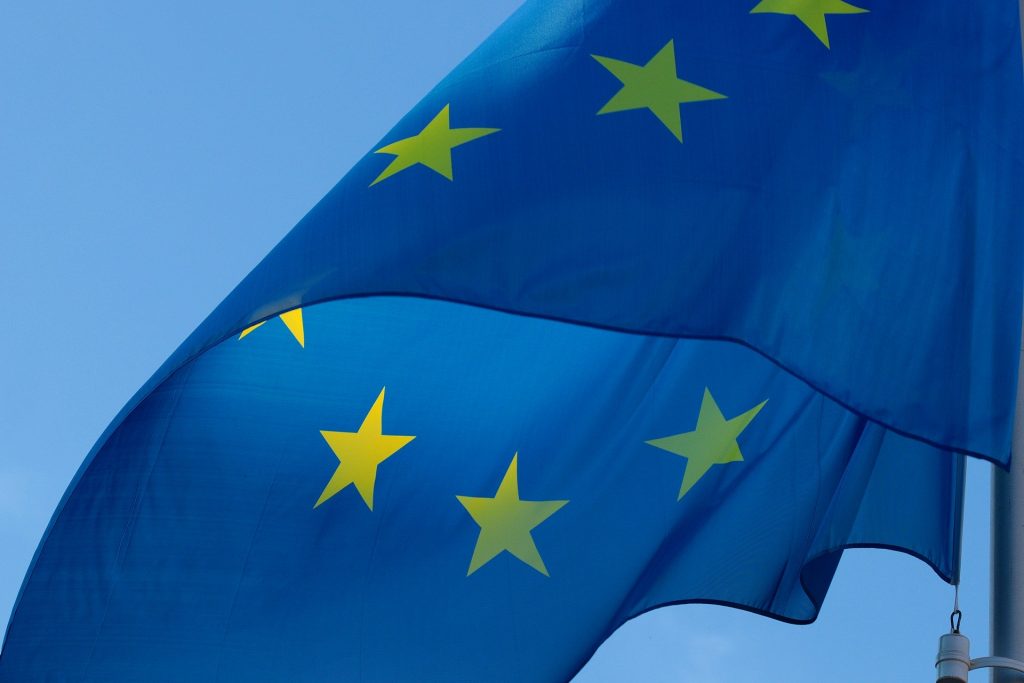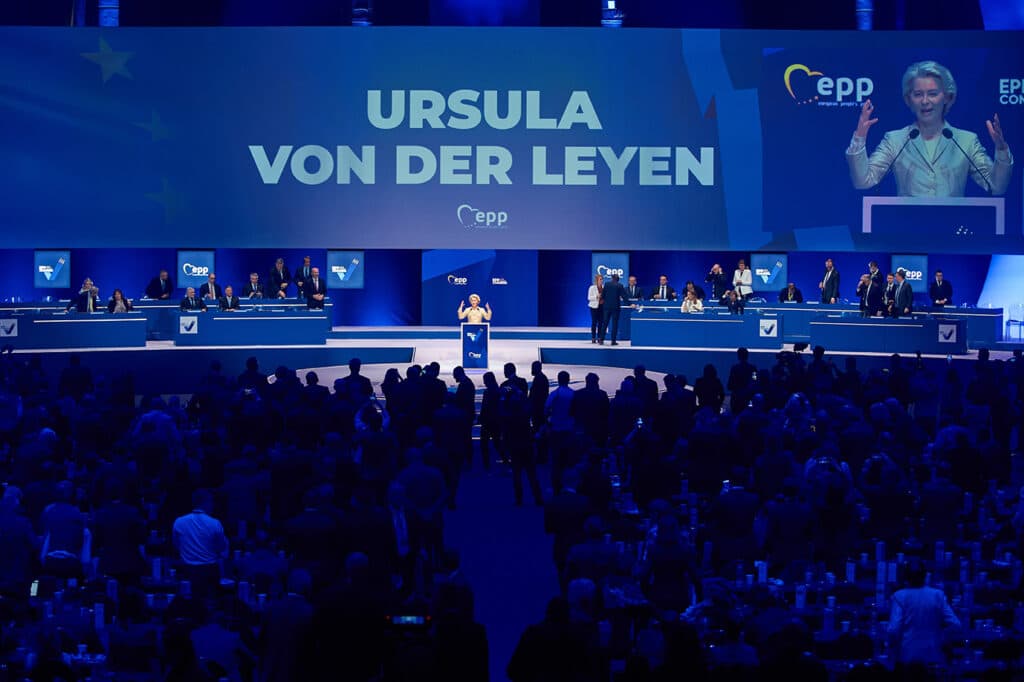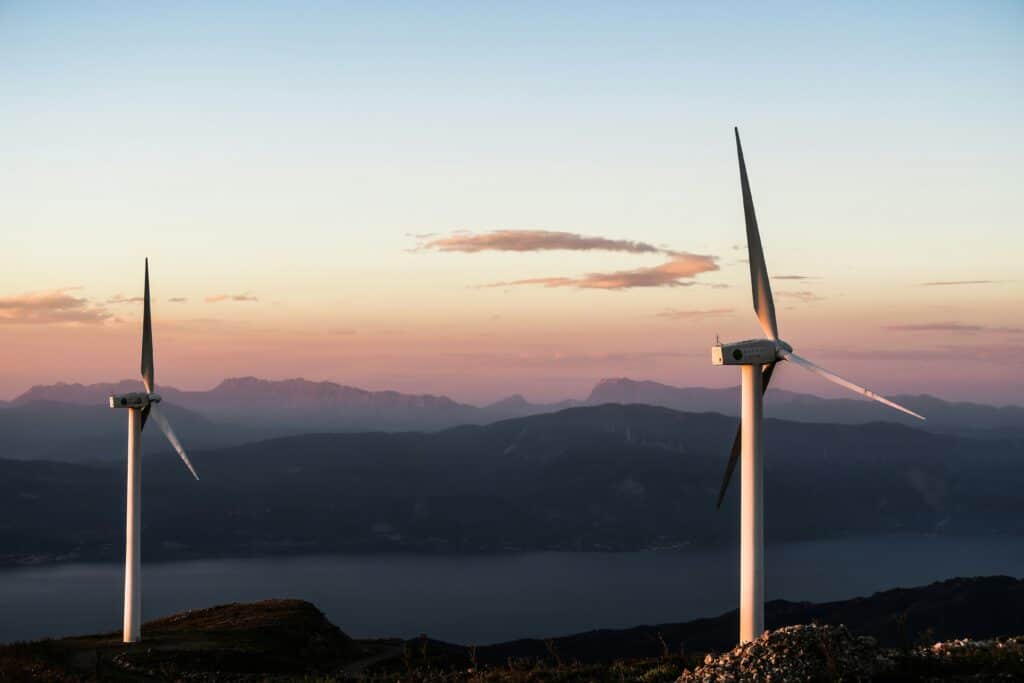The European Green Deal
What is the European Green Deal, which policy areas are impacted by it and what is the roadmap for its implementation?
The European Green Deal is the new growth strategy for Europe and a dedicated roadmap for making the EU’s economy sustainable and achieving climate neutrality by 2050. In the words of Ursula von der Leyen, President of the European Commission: “This is Europe’s man on the moon moment. Our goal is to reconcile the economy – the way we produce, the way we consume – with our planet and to make it work for our people.”
In this article, we introduce the European Green Deal by answering five questions. First, which policy areas are impacted by the Green Deal? Second, what is the roadmap for its implementation? Third, what is the European Climate Law? Fourth, what is the Fit for 55 Package? Fifth, how is the Green Deal financed?
Which policy areas are impacted by the Green Deal?
First outlined as a strategic priority in the political guidelines of Commission President Ursula von der Leyen, the European Green Deal was later detailed in Commission Communication COM(2019)640. Eight policy areas are covered and accompanied by additional elements that aim at mainstreaming sustainability in all EU policies, as shown in Figure 1.
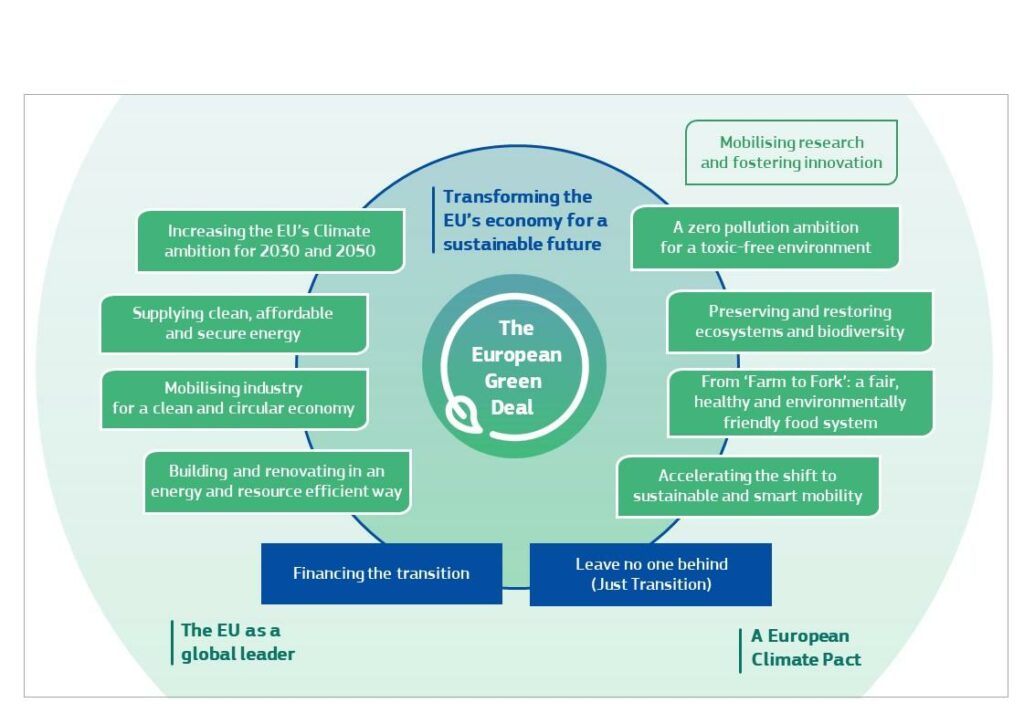
Figure 1: The EU Green Deal (source: EC, 2019)
- Climate action: Making the EU climate-neutral by 2050 is at the heart of the Green Deal. The Green Deal includes, therefore, a climate initiative paving the way towards climate-neutrality. First, the European Climate Law that enshrines, into law, the climate-neutrality objective. Second, the European Climate Pact is an EU wide initiative to engage citizens, communities and organizations in climate action. Third, the 2030 Climate Target Plan ‘Stepping up Europe’s 2030 climate ambition’ aiming to cut GHG emissions by at least 55% by 2030. The revisions required for the Climate Target Plan are presented under the ‘Fit for 55’ Package.
- Clean energy: Decarbonizing the EU’s energy system is critical to reaching climate-neutrality. This policy area is based on three fundamental principles: prioritize energy efficiency and renewable energies; secure and affordable EU energy supply; and a fully integrated, interconnected and digitalized EU energy market.
- Biodiversity measures: The EU’s ecosystem is fragile and needs to be protected. The EU biodiversity strategy for 2030 aims to put Europe’s biodiversity on the recovery path by 2030, targeting the biodiversity loss’ drivers, bringing benefits to all, the people, climate and planet.
- From Farm to Fork / Sustainable agriculture: European food systems account for nearly one-third of global GHG emissions and consume large amounts of natural resources, which highlights the need to redesign them. The ‘From Farm to Fork’ strategy aims to ensure a healthier and more sustainable EU food system. Related is also the reform of the Common Agricultural Policy (CAP), which specifies the future direction for the CAP, incorporates the Green Deal sustainable objectives, and sets the path for the “farm to fork” strategy.
- Sustainable industry: EU industry should be assisted to evolve and make the most of domestic and global opportunities. The new EU industrial strategy, based on circular economy principles, aims to support the green transformation. A key aim should be to create more sustainable and environmentally friendly production cycles via the development of new markets for climate-neutral products.
- Building and renovating: The European Commission recognizes the need to develop a cleaner construction sector and to start a renovation wave of buildings to help people cut their energy bills and decrease their energy use. The Renovation Wave Strategy aims to improve the energy performance of buildings, leading to higher energy and resource efficiency. The Commission targets at least double renovation rates by 2030. Thirty-five million buildings could be renovated by then, and up to 160,000 additional green jobs created.
- Sustainable mobility: The Green Deal includes measures to reduce emissions in transport by promoting more sustainable means of transportation. The Sustainable and Smart Mobility Strategy lays the foundations for the future EU transport system. The strategy aims to achieve a green and digital transformation and make the transport system more resilient. The targeted transport system is smart, competitive, safe, accessible and affordable.
- Eliminating pollution: The Green Deal encompasses a plan to protect Europe’s citizens and ecosystems and prevent air, water and soil pollution. The Zero Pollution Action Plan includes measures to cut pollution rapidly and efficiently. It aims to attain no pollution from “all sources” and clean the air, water and soil by 2050.
What is the roadmap for the EU Green Deal implementation?
The publication of the European Green Deal Communication COM(2019)640 by the European Commission was only the beginning of the long journey towards 2050. In general, all EU actions and policies are henceforth expected to contribute to the Green Deal objectives. In more detail, the annex of COM(2019)640 includes an indicative timetable for 47 key policies and measures to be implemented in the framework of the Green Deal. This initial roadmap is foreseen to be updated according to evolving needs and required policy responses. So far, the main steps have been
- the presentation of the EU Green Deal in December 2019
- the presentation of the Green Deal Investment Plan and the Just Transition Mechanism in January 2020,
- the proposal for a climate law in March 2020, followed by an amended proposal in September 2020, and the entry into force of the final regulation in June 2021, and
- the presentation of the Fit for 55 Package in July and December 2021.
What is the European climate law?
In March 2020, the European Commission published a proposal for the European Climate Law. The aim was to complement the existing “2030 climate and energy framework” by setting the long-term direction of travel towards 2050 and turning the political Green Deal commitment to achieve climate neutrality by 2050 into a legally binding obligation.
Later that year and based on the 2030 Climate Target Plan, the European Commission published a proposal for the climate law. In addition to setting the long-term direction towards 2050, it introduced an intermediate target for 2030. The GHG reduction target for 2030 would be raised from at least 40% (as had been previously agreed under the 2030 Climate and Energy Framework) to at least 55% compared to 1990. In April 2021, the Council and the Parliament reached an agreement on the proposal. The regulation entered into force in July 2021. The European Climate law
- establishes a framework for achieving climate neutrality within the EU by 2050, that is, a balance of EU-wide GHG emissions and their removal regulated in EU law;
- includes, in addition to the binding objective of climate neutrality in the EU by 2050, the aim of achieving negative emissions in the EU thereafter;
- recognises the need to enhance the EU’s carbon sink. (Rem.: A carbon sink is a reservoir that removes carbon dioxide from the atmosphere.)
- provides for a binding EU target of a net domestic reduction in GHG emissions by at least 55% (compared to 1990 levels) by 2030;
- allows the Commission to propose a climate target for 2040 within six months of the first global stocktake under the Paris Agreement;
- introduces rules (e.g. monitoring and reporting) to ensure continuous progress towards the global adaptation goal in the Paris Agreement;
- includes stronger provisions on adaption to climate change, and a commitment to engage with sectors to prepare sector-specific roadmaps to climate-neutrality.
The regulation establishes an independent European Scientific Advisory Board on Climate Change, composed of 15 senior scientific experts with broad expertise, that will provide independent scientific advice and issue reports on existing and proposed EU measures.
Member States are required to take further actions, such as the setting up of a climate advisory body and the establishment of a multilevel climate and energy dialogue with different stakeholders. They shall also submit their 30-year strategy to the Commission by 1 January 2029, and every 10 years after that.
The European Commission is required to assess EU and national progress, including whether the measures at these levels are consistent and whether draft EU measures and legislation, including budgetary proposals, are consistent with the 2030, 2040 and 2050 targets.
The updated GHG emissions reduction target for 2030 resulted in the need to revise all relevant policy instruments. In 2021, the European Commission adopted a series of proposals as part of the so-called “Fit for 55” Package as described in the following subsection.
What is the Fit for 55 Package?
In July 2021, the European Commission published the first part of the Fit for 55 Package, followed by a second part including the Hydrogen and Decarbonised Gas Markets Package in December 2021. In alignment with the updated GHG emissions target by 2030, the Fit for 55 package proposes an update of the other 2030 climate targets:
- 40% share of renewable energy sources (RES) in the EU’s energy mix (EU level target, complemented by indicative national targets),
- 36% energy efficiency target for final energy consumption.
The package is comprised of several proposals. The following announced initiatives were adopted by the Commission and communicated on 14 July 2021:
- Revision of the EU Emissions Trading System (COM(2021) 551 final)
- Carbon Border Adjustment Mechanism (COM(2021) 564 final)
- Review of the Effort Sharing Regulation (COM(2021) 555 final)
- Revision of the Energy Tax Directive (COM(2021) 563 final)
- Amendment to the Renewable Energy Directive to implement the ambition of the new 2030 climate target (COM(2021) 557 final)
- Amendment of the Energy Efficiency Directive to implement the ambition of the new 2030 climate target (COM(2021)558)
- Revision of the Regulation on the inclusion of greenhouse gas emissions and removals from land use, land use change and forestry (LULUCF) (COM(2021) 554 final)
- Revision of the Directive on deployment of alternative fuels infrastructure (COM(2021) 559 final)
- Revision of the Regulation setting CO₂ emission performance standards for new passenger cars and for new light commercial vehicles (COM(2021) 556 final)
In addition to these initiatives, the proposal for a new social climate fund (COM(2021) 568 final) and the EU Forest Strategy (COM(2021) 572 final) are considered as part of the Fit for 55 files.
The following initiatives were adopted and communicated on 15 December 2021:
- Proposal for a regulation on methane emissions reduction in the energy sector (COM(2021) 805 final)
- Revision of the energy performance of Buildings Directive (COM(2021)802)
- Revision of the Third Energy Package for gas (Directive 2009/73/EU and Regulation 715/2009/EU) to regulate competitive decarbonised gas markets (COM (2021) 803 and COM(2021) 804, respectively)
How is the EU Green Deal financed?
To achieve the Green Deal ambition, significant investments will need to be made and sustained over time. In January 2020, the European Commission published a communication that detailed the investment pillar of the European Green Deal: The European Green Deal Investment Plan (EGDIP), also referred to as the Sustainable Europe Investment Plan. The EGDIP builds on contributions from the EU budget, national budgets to EU projects, public and private investments mobilised by InvestEU and the ETS funds, as is shown in Figure 2.
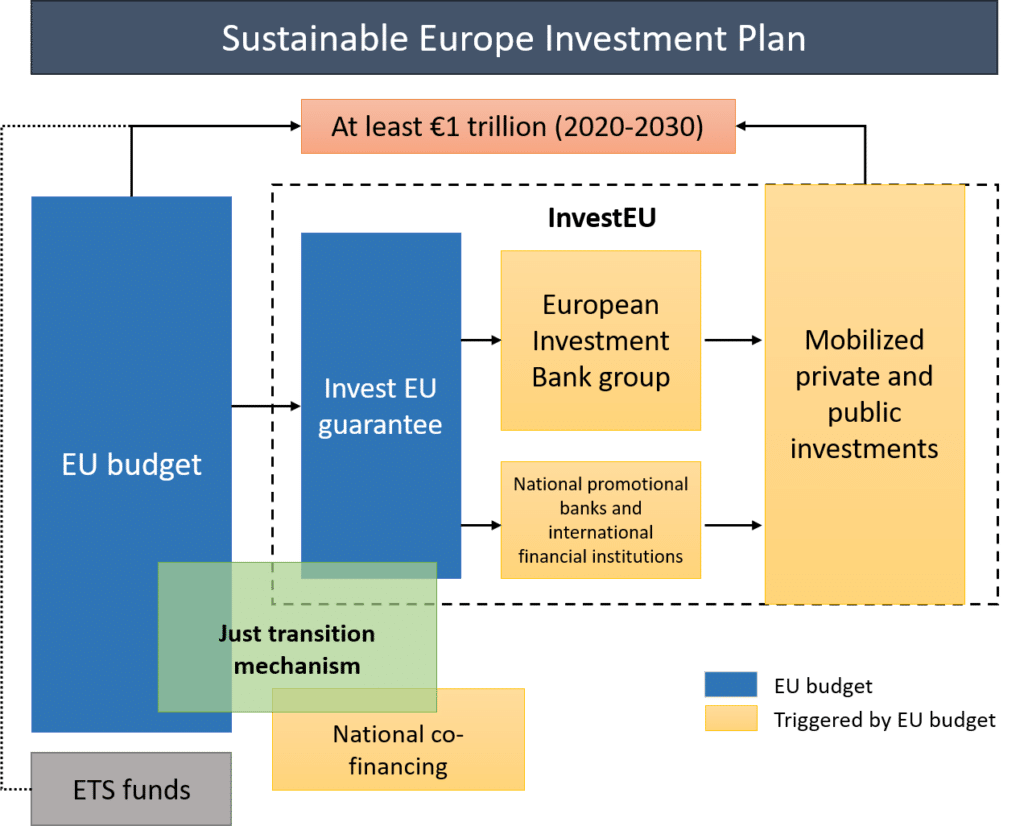
Figure 2: Conceptual overview of the mechanisms to finance the European Green Deal (modified from EC, 2020)
The Commission has pledged to mobilise at least € 1 trillion in sustainable investments over the period 2020-2030 to reach the updated 2030 climate and energy targets.
A significant contribution to the EGDIP is coming from the EU budget. 30 % of the EU’s multiannual budget (2021-2028) and the EU’s unique NextGenerationEU (NGEU) instrument to recover from the COVID-19 pandemic, has been allocated for green investments. Member States must use at least 37 % of the financing they receive under the Recovery and Resilience Facility (which is part of the NGEU) for investments and reforms that support climate objectives. On behalf of the EU, the Commission intends to raise 30 % of the funds under NGEU through the issuance of green bonds. It is expected that such high contribution of the EU long-term budget to the EDGIP will stimulate an additional national co-financing on climate and environment projects.
A smaller contribution to the EGDIP is coming from the Innovation and Modernisation Funds that are financed by a part of the revenues stemming from auctioning carbon allowances under the EU ETS.
The Just Transition Mechanism is designed to provide financial support and technical assistance to those most affected by the green economy’s transition. It has three main sources of financing:
- A Just Transition Fund used primarily to provide grants.
- A dedicated just transition scheme under InvestEU that will crowd in private investments.
- A public sector loan facility with the European Investment Bank backed by the EU budget to leverage public financing and mobilise additional investments to regions concerned.
The InvestEU programme is intended provide the EU with crucial long-term funding by leveraging substantial private and public funds. Noteworthy is the inclusion of an EU budget guarantee that allows the European Investment Bank Group and other implementing partners such as National Promotional Banks and International Financial Institutions to invest in more and higher-risk projects. As stated in the InvestEU Regulation (EU) 2021/523, actions under the InvestEU programme are expected to contribute at least 30 % of the overall financial envelope of the InvestEU Programme to climate objectives.
In addition, sustainable finance measures are foreseen to contribute to the European Green Deal by boosting and channeling private sector investment in green and sustainable projects. These measures include the Taxonomy Regulation (EU) 2020/852 for creating a common classification system for sustainable economic activities. In essence, the taxonomy regulation requires that “‘green funding’ will have to finance predominantly, if not exclusively, the commercial activities that are ‘taxonomy compliant’” (Piebalgs and Jones, 2021), which will have an influence on the attractiveness of energy investments in future. Jones et al. (2021) also state that “it is fair to expect that non-taxonomy aligned activities will become progressively more difficult, and more expensive to finance.”
Relevant Links:
- Green Deal course
- More information about the EU taxonomy for sustainable activities and the most recent developments are provided by the European Commission here
- For more information on the EU Taxonomy, you may watch the recording of the FSR debate on Sustainable Finance and the EU taxonomy from June 2021, available here
- For more information on the EU Taxonomy, you may watch the recording of the FSR debate on Sustainable Finance and the EU taxonomy from June 2021, available here
Further reading:
Jones, C., Piebalgs, A., and I. Conti, 2021. Taxonomy and natural gas: a fact-based approach to drive sustainable solutions. RSCAS Policy Briefs, 2021/35. Available here
Piebalgs and Jones, 2021. The importance of the EU taxonomy : the example of electricity storage. RSCAS Policy Briefs, 2021/11. Available here



